Parthasarathy Temple Triplicane
Immerse yourself in the timeless greatness of the Parthasarathy Temple in Triplicane. Get blessed and find peace, joy, and positivity. Listen to the audio above.
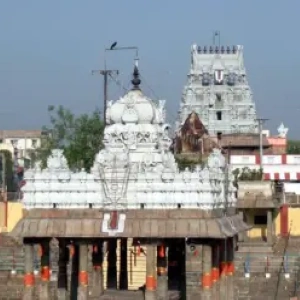
Perumal has graciously manifested himself in several places on this earth to help devotees attain moksham at his lotus feet. These locations have become famous as the Archaavatara Sthalangal. They are of immense spiritual significance. Among these, of special note are the 108 Divya Desams, which were extolled and immortalized in songs by the revered Azhwars. Sri Parthasarathy temple, Triplicane, Chennai is one such Divya Desam.
This temple is a unique blessing as it allows you to worship the presiding deities of Ayodhya, Sri Rangam, Kanchipuram, Ahobilam, and Mathura all in one place.
All 3 postures of Perumal - Asana, Sthanaka, and Shayana are here.
Perumal can be seen in Yoga, Bhoga, and Veera Bhava here.
Who built Parthasarathy Temple?
According to stone inscriptions, the current temple was constructed by a Pallava King in between 779-830 AD. The Gopuram at the entrance was put together by Thondaiman Chakravarthy, another Pallavan King. Later, the Vijayanagar rulers also contributed towards the renovation of the temple.
Inscriptions also talk about the contributions of Nandivarman, Veera Venkatapathi Raja of Vijayanagar, Rangaraya Deva, Mahamaravarman, Tribhuvana Veera Veera Deva Kulottungan, and Rajaraja Devan.
The temple of Vedavalli Thayar was constructed during the later part of the 19th century.
How Triplicane got its name
Triplicane is derived from the Tamil word Thiru Alli Keni. It means the sacred pond with Alli flowers. The Goddess here is known as Alliankothai. The pond is blessed by Goddess Tiruvalli. It is also called Kairavini Pushkarini. There was a huge garden of Tulasi plants around Kairavini called Vrindaranyam.
Mystery of the missing fish
It's a mystery why there are no fish in the temple pond. Mudgala Maharshi used to meditate and perform tapas near this pond. At first, the pond was teeming with fish jumping about and having fun. The Maharshi was disturbed by this. He ordered the fish to leave by sunrise. Miraculously, they followed and never returned.
Theerthams around Kairavini
- Indra teertham - people used to perform daanam of horses here.
- Soma teertham - daanam of milk, curd, butter, and silk cloth is done here.
- Meena teertham - daanam of pearls, coral, and honey is done here.
- Agni teertham - bathing here gives health.
- Vishnu teertham - bathing here makes life peaceful. If you take a dip here, it is equal to bathing in Ganga for 60000 years. Performing Shraadham by the side of this teertham on the Krishna Paksha Ashtami of Karthigai is highly pleasing for ancestors.
A Gandharva gets relief from a curse
Vishwavasu, a Gandharva, was flying over the Vindhya mountains. Durvasa Maharshi, known for his fiery temper, was meditating below. Vishwavasu’s shadow fell upon the Maharshi. He felt offended and cursed - whoever's behind this, let his body be destroyed. Vishwavasu went to Lord Shiva and prayed for relief. Lord Shiva told him to observe tapas near Kairavini. He got his body back.
Story of Parthasarathy temple
Lord Parthasarathy, who is also known as Venkatakrishnan is the presiding deity of this temple. King Sumati prayed to Lord Venkateswara for his darshanam as the charioteer of Partha and preaching the Gita to him. Venkateswara Swamy appeared in his dream and prompted him to go to Vrindaranyam. There, the Lord promised to grant him the darshanam he desired.
At the same time, Vyasa Maharshi instructed his student Atreya to go to Vrindaranyam and perform severe tapas to shield the world from Kaliyuga's onslaught. Vyasa gave him an idol of Lord Krishna with Panchajanyam in his right hand and jnana-mudra in the left pointing to his lotus feet. The idol represented shlokas 1.15 and 18.66 of Bhagavad Gita. Sumati and Atreya reached Vrindaranyam together. Sumati got the darshanam of Perumal as he had promised.
The beautiful and captivating utsava murthy of Lord Parthasarathy is truly enchanting. The face of the utsavar has arrow marks, representing wounds inflicted by Bhishma during the battle of Kurukshetra. During thirumanjanam, the deity's idol turns golden for about an hour. Afterward, it reverts back to its usual blue color. It’s a miracle!
Parthasarathy Perumal has a mustache
In the Triplicane temple, Parthasarathy Perumal’s moolavar has a mustache. This symbolizes the valor Lord Krishna demonstrated when fighting in the battlefield. It also stands for his lineage, the famous Yadava dynasty.
Idols of Rukmini, Balarama, Pradyumna, Aniruddha, and Satyaki are also inside the shrine. This is the only temple where the entire family of Lord Krishna is worshiped in a single location.
Ranganathar and Vedavally Thayar Sannidhi
In Vaikuntham long ago, Sriman Narayana and Goddess Mahalakshmi had a loving disagreement between them. The divine mother chose to leave Vaikuntham and took the form of a young child. She lay down beneath a sandalwood tree in Vrindaranyam. At that time, the Saptarshis were doing intense tapas in Vrindaranyam. In awe, they saw the radiant, divinely beautiful child beneath the sandalwood tree. Her captivating innocence filled their hearts with bliss.
They realized that the young child resembled Mahalakshmi whom they had previously seen in their meditations. They brought her to their hermitage. They named her Vedavalli because they found her during their Vedic chantings. As time passed, the little child blossomed into a stunning maiden. Lord Sriman Narayana decided to come down to earth and meet his divine beloved.
Taking on the form of a handsome prince, the Supreme Lord descended to Vrindaranyam. Vedavalli was able to recognize her husband in this form. She immediately exclaimed - Mannathan, which means My Lord. Bhrigu Maharshi humbly asked Perumal to grant him a vision of his true form. Perumal graciously complied with his prayer. The Maharshi requested that Perumal stay there permanently so they could worship him every day. Perumal agreed. The Lord is known as Mannathar here.
The reunion of the divine couple is celebrated as kalyanotsavam every year on Shukla paksha Dwadashi of Masi month.
At the Parthasarathy temple, Vedavalli Thayar is a Padi thanda patni - which means she will never cross the doorstep or go outside. Even during festivals, she is not taken out in procession.
Sri Ramar Sannidhi
This is a sacred place to worship Lord Rama and his divine family. Here, Rama, Lakshmana, Bharata, Shatrughna, and Goddess Sita Devi are together at one place.
In the Pandiya Nadu region, there was a mountain called Pandaram. This is where a sage by the name of Sasivadan had been performing tapas. Indra became extremely anxious about the kind of boon the rishi was expecting in return for his tapas. He decided to disrupt the tapas by sending an apsaras named Hylai to him. Hylai had a beautiful, melodious voice. Hylai's gentle, melodious songs were so entrancing that the sage Sasivadan was smitten! Much like Visvamitra was for Menaka, Sasivadan fell in love with Hylai. Eventually, they had a child.
Miraculously, despite being abandoned in a den, the child grew up safe and sound thanks to divine providence. Whenever the child was hungry and started to cry, honeycombs inside the den would put a few drops of honey directly into its mouth. As time went by, the rishis found out that the child belonged to Sasivadan and they helped in raising him.
The child was called Madhuman since he had been nourished with honey. One day, Sage Gargya met Madhuman. Gargya Rishi explained to Madhuman how Lord Narayana incarnated as Rama, the son of Dasaratha. After spending some time in this world, the Lord along with Sita Devi and his brothers eventually departed for his heavenly abode. Valmiki Maharshi had requested Gargya Maharshi to pass on the information to Agasthiar. Gargya Maharshi extolled the virtuous traits of Sri Rama and the divine benevolence of Sita Devi. That night, Madhuman had a dream in which Gargya rishi showed up. The rishi told him - Oh, Madhuman! If you want to meet Lord Rama, go to Vrindaranyam and perform tapas focusing on him. Your wish will be granted. On the following day, Madhuman set off on his journey and eventually made it to Vrindaranyam. There, he began his tapas near Kairavini.
After many years, Lord Rama, the Divine Mother, and his brothers visited the rishi and Madhuman was ecstatic with joy. He prayed to Perumal to remain in Vrindaranyam, so he could have the chance to worship him every day. Perumal agreed. Thus, we are blessed to be able to worship Lord Rama and his family at Triplicane today.
Sri Gajendra Varadar Sannidhi
Varadarajar appeared near Kairaveni so that his devotee, a rishi named Saptharomar, can see his form in which he gave moksham to Gajendra. This sannidhi has an idol of Perumal seated atop Garuda with his iconic conch and discus. Even today, he is always willing to help those who are devoted to him.
Sri Azhagiya-Singar Sannidhi
Lord Narasimha is typically seen in two forms: the ugra roopam and the yoga roopam. The main deity is Yoga Narasimhar and the utsavar is popularly known as Azhagia Singar or Thelliya Singa Perumal.It is a peaceful pose, reflecting the completion of his mission to kill Hiranya Kasipu.
With an aim to gain moksham, Atri Maharshi was performing tapas in Vrindaranyam. One day, he took a bath in Indra teertham and then devoted himself to prayers. Suddenly, the atmosphere vibrated with the beats of divine drums. Urvashi, Menaka, Rambha, and Tilottama were gracefully dancing to the rhythm. He saw a magnificent brilliance glowing in front of him. It was coming from an enchanting chariot decorated with gemstones. It was Azhagiya Singar Perumal. Atri Maharshi prayed for Moksham. After granting him moksham, Perumal said that he would continue to be there in Vrindaranyam to bless other devotees.
Festivals
- 10-day Laksharchanai in February.
- 10-day Brahmotsavam in April.
- Vaikuntha Ekadashi.
Timings
- 6.00 am to 12.00 noon.
- 4.00 pm to 9.00 pm.
What devotees say..
- Very beautiful and historic. Well maintained. Must visit. Very important temple.
- The energy is palpable.
- You'll have to be there to feel the vibes.
- It'll definitely give you a good feeling once you visit the place.
- Been there with family and such a peaceful site it is. A visit to invoke positive energy.
- This is perhaps the best temple in Chennai to get a genuine feel for the Sri Vaishnava faith and how it is practiced. Just go for the experience, especially at times of ceremony, which can be moving.
- It is a very colorful temple, different parts of it having been painted quite differently and using different tunes.
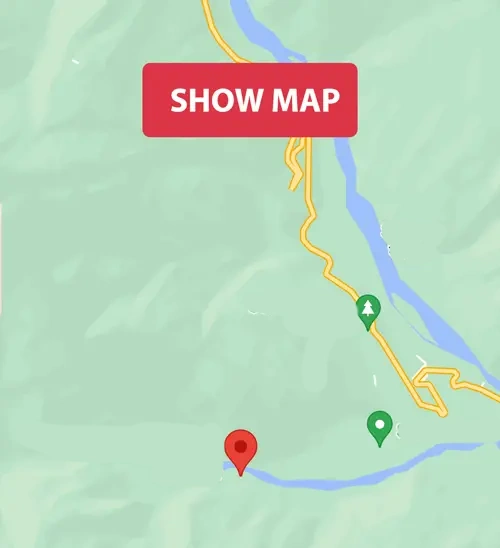
Parthasarathy temple nearby Railway stations
Light House - 1.08 km. Mundaka Kanni Amman Koil - 1.11 km. Tiruvallikeni - 1.55 km. Chepauk - 1.55 km. Chintadripet - 2.22 km. Thirumayilai - 2.22 km. Mandaveli - 2.47 km.
Parthasarathy temple to Marina beach distance
750 m.
Quiz
Why is Arjuna called Partha?Recommended for you
Sri Hari is the support of world
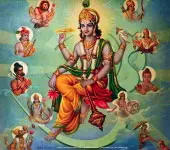 Click here to know more..
Click here to know more..
Durga Saptashati - Vaikrutika Rahasya
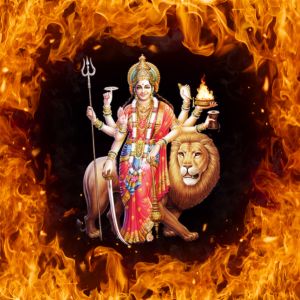
atha vaikri'ntikam rahasyam . ri'shiruvaacha . trigunaa taamasee devee saattvikaa yaa tvayoditaa . saa sharvaa chand'aakaa durgaa bhadraa bhagavate....
Click here to know more..Kumara Mangala Stotram
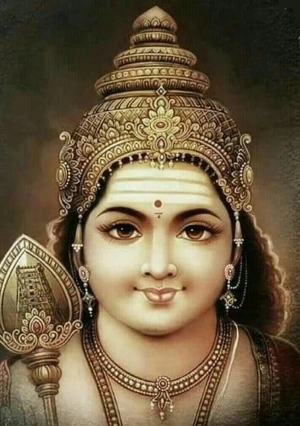
yajnyopaveeteekri'tabhogiraajo ganaadhiraajo gajaraajavaktrah'.....
Click here to know more..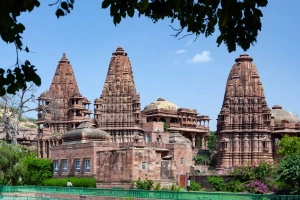
English Topics
Temples
Click on any topic to open
- 71 Ahobilam - Lord Narasimha's Sacred Abode
- 70 Malaikottai Temple, Trichy - Discover Spiritual Bliss
- 69 Jambukeswarar Temple, Trichy
- 68 Vaitheeswaran Koil - A Healing Pilgrimage
- 67 Dwaraka and Somnath
- 66 Khidkali Mahadev Mandir
- 65 Pongu Sani Temple, Thirukollikadu
- 64 The Unique And Fascinating Jharni Narasimhaswamy Temple, Bidar
- 63 Yamunotri: A Spiritual Haven in the Himalayas
- 62 Anantha Padmanabha Swamy Temple - Fascinating Legends
Please wait while the audio list loads..
30
Ganapathy
Shiva
Hanuman
Devi
Vishnu Sahasranama
Mahabharatam
Practical Wisdom
Yoga Vasishta
Vedas
Rituals
Rare Topics
Devi Mahatmyam
Glory of Venkatesha
Shani Mahatmya
Story of Sri Yantra
Rudram Explained
Atharva Sheersha
Sri Suktam
Kathopanishad
Ramayana
Mystique
Mantra Shastra
Bharat Matha
Bhagavatam
Astrology
Temples
Spiritual books
Purana Stories
Festivals
Sages and Saints
